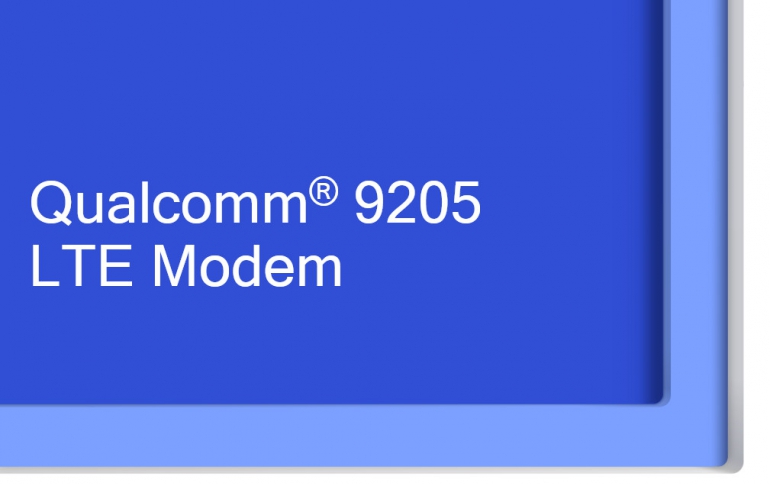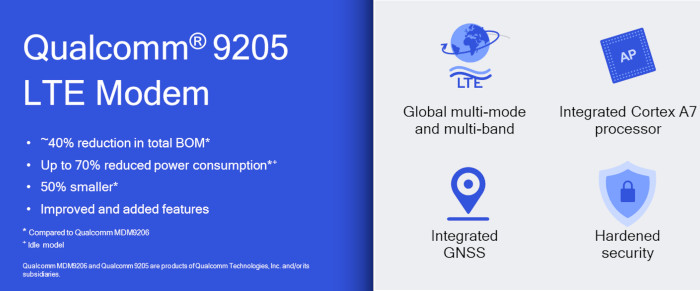
Qualcomm Introduces 9205 LTE Modem for IoT
Qualcomm today announced its next-generation modem purpose-built for Internet of Things (IoT) applications such as asset trackers, health monitors, security systems, smart city sensors and wearable trackers.
The new Qualcomm 9205 LTE modem is bringing together technologies required to build cellular-enabled IoT products and services in a single chipset, including global multimode LTE category M1 (eMTC) and NB2 (NB-IoT) as well as 2G/E-GPRS connectivity, application processing, geolocation, hardware-based security, support for cloud services and accompanying developer tools.
Compared to its predecessor, the modem is engineered to reduce power consumption by up to 70% in idle mode, a critical consideration for battery-powered IoT devices that need to operate for 10 years or longer in the field. The Qualcomm 9205 LTE modem is also 50% smaller and more cost-effective than its predecessor. The chipset is also software-compatible with Qualcomm’s prior LTE IoT solutions.

Qualcomm 9205 LTE modem technology highlights
- Support for both 3GPP release 14 Category M1 and NB2 for operation with networks using any of these LTE IoT modes, as well as 2G/E-GPRS to allow for connectivity in areas where LTE IoT is not yet deployed. Category M1 mode also supports voice for applications such as monitored security panels, and mobility for applications such as asset trackers.
- The Qualcomm 9205 LTE modem features an RF transceiver with extended bandwidth support from 450 MHz to 2100 MHz. It also integrates an RF front-end, a commercial first in the cellular IoT space, which is designed to simplify the design and certification of products using the new modem.
- To maximize battery life, the modem couples ultra-low system-level cut-off voltage with provisions for adapting power usage according to the state of charge of the battery.
- Arm Cortex A7 up to 800MHz with support for ThreadX and AliOS Things real-time operating systems. The integrated applications processor avoids the need for an external microcontroller.
- Integrated global positioning support for Global Navigation Satellite Systems (GNSS) including GPS, Beidou, Glonass, and Galileo. The Qualcomm 9205 LTE modem enables design flexibility allowing for the use of either a shared GNSS/LTE antenna or a dedicated one.
- Secure boot from hardware root-of-trust, Qualcomm Trusted Execution Environment, hardware cryptography, storage, and debug security.
- Designed to support developers in running custom software on the integrated applications processor, as well as to provide them access to additional capabilities of the Qualcomm 9205 LTE modem, such as geolocation. The SDK offers pre-integrated support for many cloud platforms, including Alibaba Cloud Link One, China Mobile OneNET, DTSTON DTCloud, Ericsson IoT Accelerator, Gizwits and Verizon ThingSpace, and it also allows developers to extend this integration further and develop support for other major IoT cloud providers.
Solutions based on the new modem, including modules from Gemalto, Quectel and Telit, are expected to be commercially available in 2019.





















